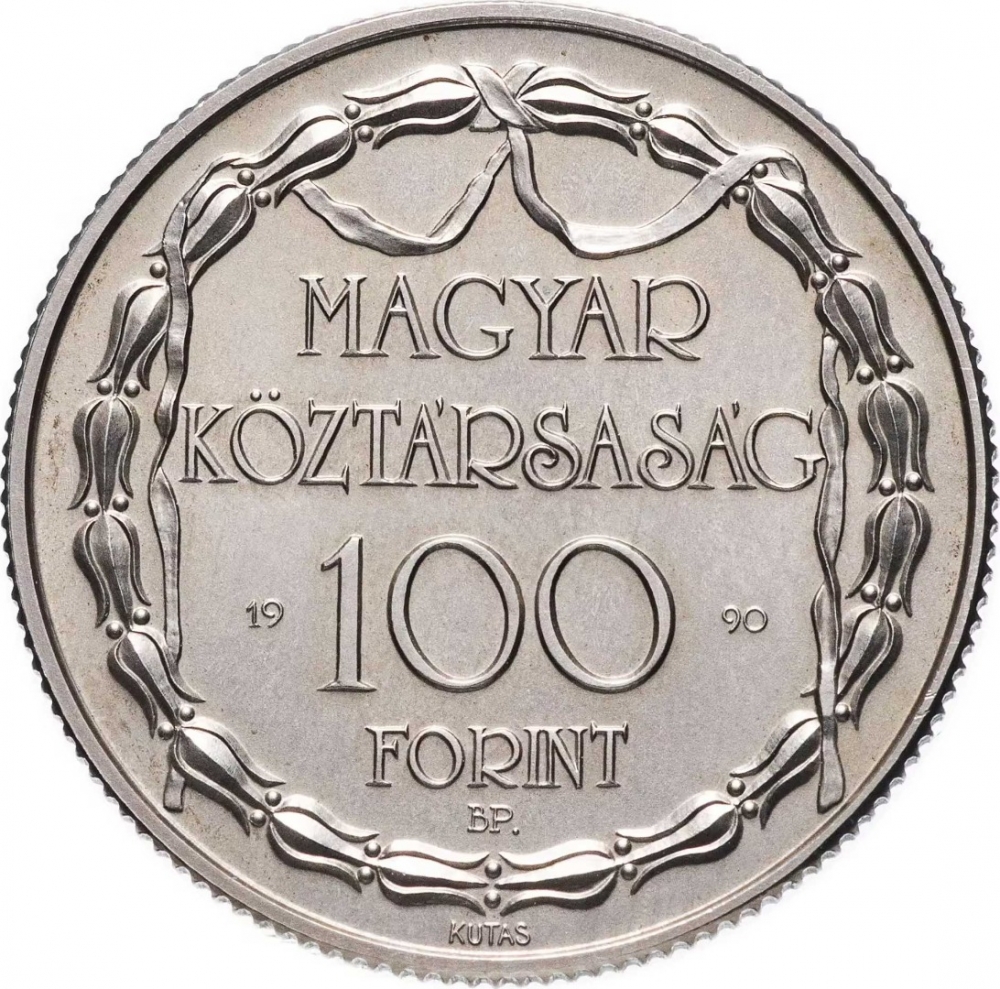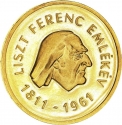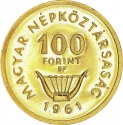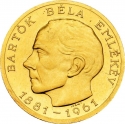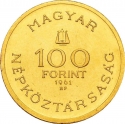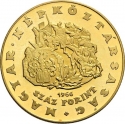You are about to finish your registration. Please check your mailbox (including spam folder). There should be a letter with a confirmation link. Check setting to make sure that your e-mail address is correct.
Send letter againDescription
Hungarian-language theater has its roots in the 18th century, but it saw significant growth with the founding of the National Theater in Budapest in 1837. This institution became crucial in nurturing Hungarian drama and supporting local playwrights and actors. As nationalism rose in the 19th century, theater emerged as a platform for cultural expression and social critique, notably during the Revolution of 1848-1849. Over time, Hungarian theater evolved, embracing various styles and influences while remaining integral to Hungarian cultural heritage. Presently, Hungarian theater flourishes, presenting a wide range of productions both at home and abroad.
Engraver: László Kutas
Obverse

|
Depicts a stage scene adorned with drapery, featuring a ladder and symbols of "Good" and "Evil", a rectangular inscription around TWO HUNDRED YEARS OF PROFESSIONAL HUNGARIAN-LANGUAGE THEATRE. KÉTSZÁZ ÉVES |
|---|---|
Reverse

|
Depicts a wreath of tulips surrounding a draped decoration, the country name (Hungarian Republic), the denomination dividing the issue year, the mintmark (BP) inside, and the engraver's name below. MAGYAR |
| Edge |
100 Forint
Third Republic
200th Anniversary of the Hungarian Theatre
KM# 701 Schön# 188 Adamo# EM118
200th Anniversary of the Hungarian Theatre
Characteristics
| Type | Commemorative Issue (Non-circulating) |
| Material | Cupronickel |
| Weight | 12 g |
| Diameter | 32 mm |
| Thickness | 2.1 mm |
| Shape |
|
| Alignment | Medal |
| Mint |
Budapest Mint (BP)
|

